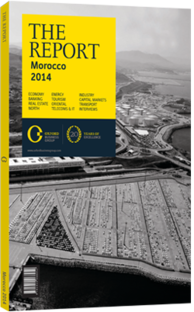A balancing act: Reforming the pension system
Similar to many countries around the world, Morocco’s retirement system is at a crossroads, facing a challenging balancing act of maintaining coverage with an increasingly constrained set of financial circumstances. However, unlike many more developed countries beleaguered with an ageing population and falling birth rates, young people make up some 30% of Morocco’s population. Their inclusion into the formal system and the retirement scheme can mitigate many of the problems more developed countries’ pension schemes face.
But therein lies the crux of Morocco’s pension system problems: inclusion. While official figures put unemployment at near 9%, the reality is that only 50% of the working age population is believed to be active. Unemployment is particularly high among the youth, with the World Bank indicating that around 18-19% of 15- to 24-year-olds in 2012 were unemployed, with rates as high as 35% in some urban areas. Second, the current pension system covers only an estimated 33% of the population due to the large informal economy. With life expectancy increasing and population growth expected to fall from 1.4% to below 1% from 2020 onwards, now is the time for the Moroccan government to act.
PENSION SYSTEM: Morocco’s pension system es three principal pension regimes: Régime des Pen- sions Civiles (RPC) for civil servants (managed by the Caisse Marocaine des Retraites, CMR); Régime Collec- tif d’Allocation de Retraite (RCAR) for employees of state-owned companies, and a regime for private sec- tor employees (Caisse Nationale de Sécurité Sociale, CNSS, for basic coverage and Caisse Inter-professionnelle Marocaine de Retraite, CIMR, for complementa- ry coverage). These differ in contribution rates and in methods used to calculate retirement benefits. Total annual contributions (employee and employer) under CMR are 20%; under RCAR, 18%; CNSS, 11.89%; while CIMR rates range from 6.9% to 23%. comprisReforms to extend retirement coverage would require the existing funds to be financially stable – an urgency given that the RPC pension fund is expected to hit a deficit for the first time in 2014. If corrective measures are not taken, it may be unable to pay out by 2021. While the RCAR and CNSS face less dire situations, without additional reform it is estimated they will enter deficit by 2021 and 2026, respectively.
PROPOSED CHANGES: This appears to have served as the impetus for reforms, with Mohammed El Alaoui El Abdallaoui, general manager at CMR, highlighting that the National Commission, created in 2004, met anew in January 2014 to discuss the current situation and agreed to examine different approaches to the reform. The proposed pension reform envisages a two-step process, the first of which will allow for parametric reforms of the three schemes, starting with the CMR. Measures proposed include increasing the pension age, raising salary contributions, and changing the base salary and annuity rates used to calculate benefits. The second step sees comprehensive system reform, regrouping the existing regimes under two main pillars, one for the public and semi-public sectors and one for the private sector and citizens with no coverage.
SOCIAL POLICIES: Pension reform has been under discussion for over 10 years, thus one cannot but be sceptical of the government’s willpower to take action, particularly given the risk of social unrest. The majority of trade unions have already indicated their disapproval of the proposed changes. However, given the acknowledgement that change is urgently needed, reforms are expected to come into effect as early as 2015, assuming parliament approves necessary steps.
The outlined changes do not specifically address the underlying issue of inclusion, which means that these efforts must be paired with a broader push to tackle youth unemployment. The government aims to reduce unemployment to 8% by 2016, notably by providing funding to youths to attend vocational training for needs in line with the labour market. In the meantime, the government aims to provide a boost in direct employment, with the Finance Law targeting creation of as many as 18,000 new public sector jobs in 2014.
You have reached the limit of premium articles you can view for free.
Choose from the options below to purchase print or digital editions of our Reports. You can also purchase a website subscription giving you unlimited access to all of our Reports online for 12 months.
If you have already purchased this Report or have a website subscription, please login to continue.

